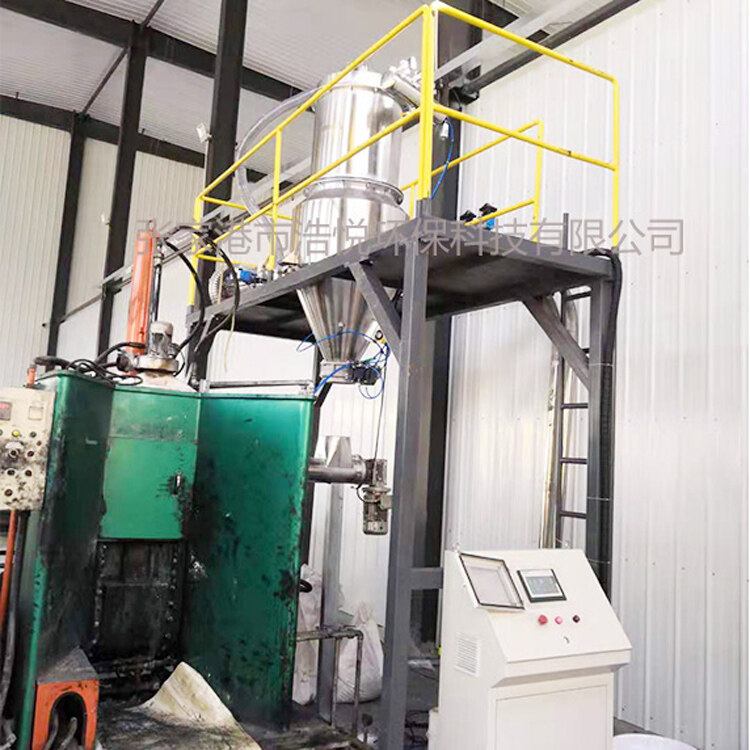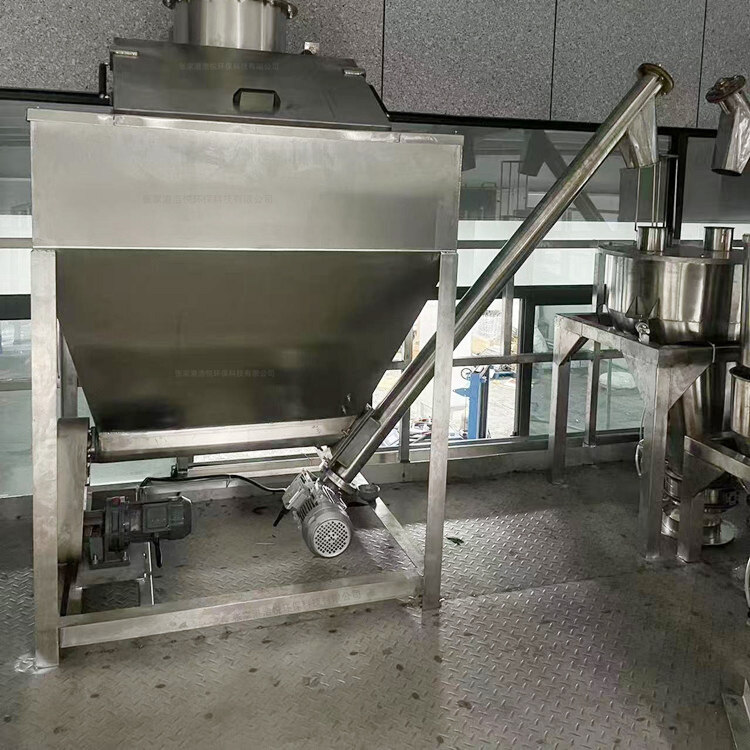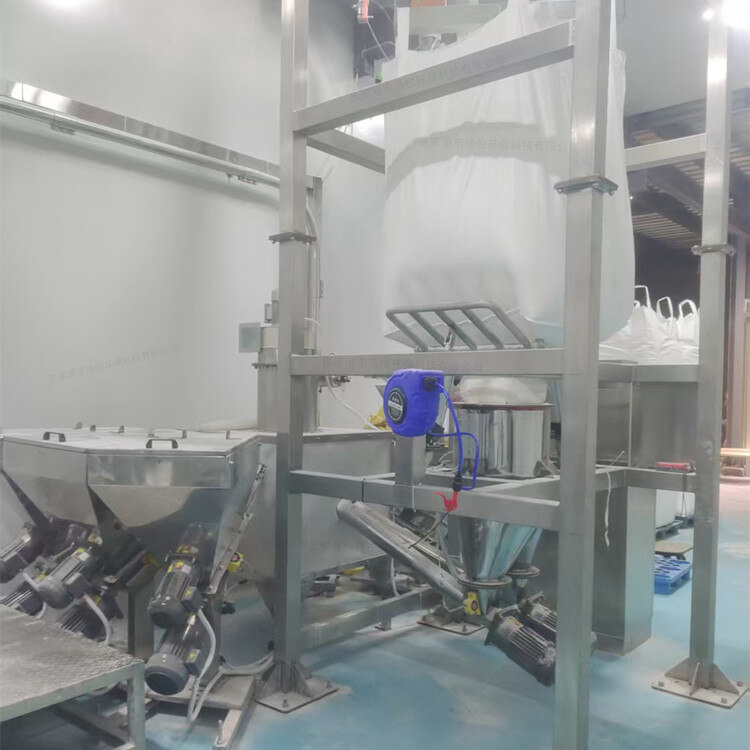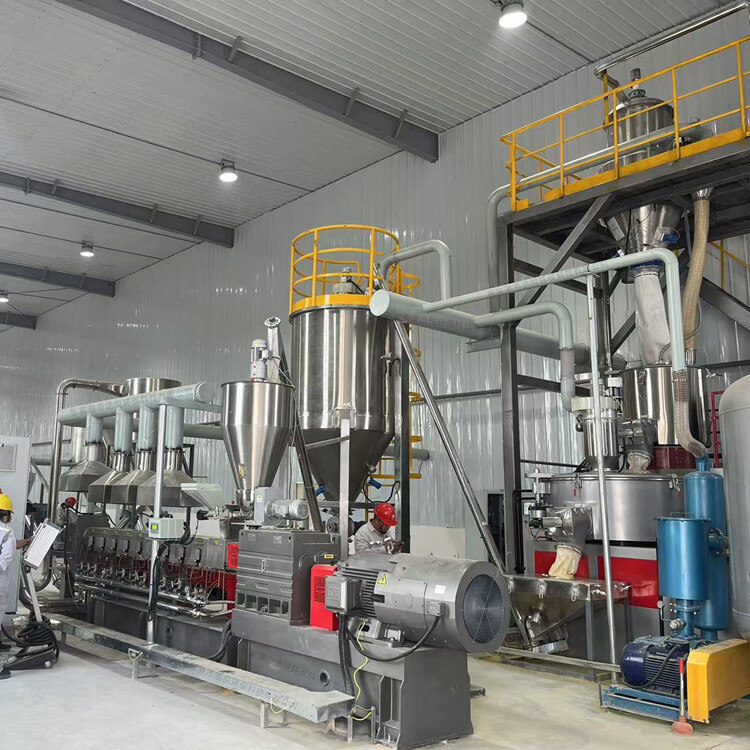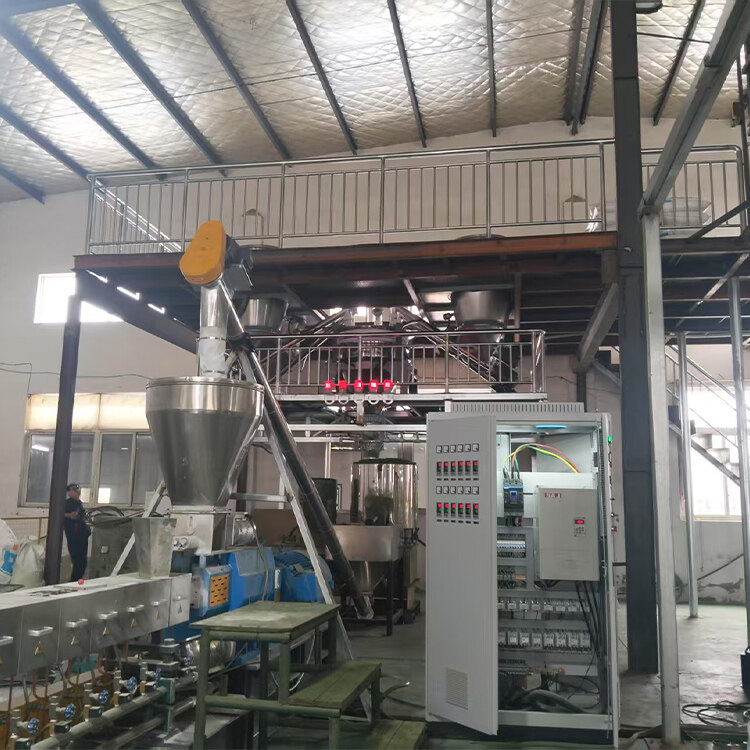- Introduction to automatic batching machine and fully automatic batching machine equipment
- The powder metering system tells you about the introduction of the mixing and drying machine
- 1000kg vacuum feeding machine
- Fully automatic small material batching system
- Research on Innovation of Automatic Weighing Machine Technology
- Design and operation of automatic batching system using PLC, industrial computer and frequency converter
Mixing machine batching system
- Category:Batching Plant
- Hits:111次
- Release Date:2025-06-30
- Share:
- Inquiry
- Details
In the production process of polymer materials such as rubber and plastic, the internal mixer, as the core equipment for material mixing, directly affects the final performance and quality of the product due to the accuracy of its ingredients. The batching system of the internal mixer ensures that the materials entering the mixer meet the process requirements by accurately measuring, conveying, and proportioning various materials such as raw rubber, carbon black, and additives. It is a key link in improving production efficiency and ensuring product stability. The following will provide a comprehensive introduction to the batching system of the internal mixer from the aspects of system composition, working principle, technical advantages, application scenarios, and development trends.
1、 Core components of the system
The batching system of the internal mixer mainly consists of five modules: material storage unit, measuring unit, conveying unit, control system, and auxiliary unit. Each part works together to form a complete automated batching system.
(1) Material storage unit
This unit is responsible for storing materials to be prepared and adopts differentiated design based on material characteristics. Block shaped raw rubber is usually stored in a three-dimensional material bin with an automatic grabbing device for easy access in the future; Powdered materials such as carbon black and calcium carbonate are stored in sealed silos. Dust removal devices are installed at the top of the silos to prevent dust from overflowing. At the same time, level sensors are installed to monitor the inventory in real time. When the material is below the set value, an automatic alarm prompts for replenishment; Liquid additives are stored in tanks with stirring and temperature control functions to ensure uniform and stable composition of the additives, and to avoid performance being affected by temperature changes.
(2) Measurement unit
The measuring unit is the core of achieving precise batching, and multiple measuring methods are adopted according to the material form. For block materials, precise weighing of single or multiple pieces of material can be achieved through the combination of a high-precision weighing platform and a robotic arm; Powdered materials are often measured using weight loss scales or spiral scales. By monitoring the weight changes of the silo in real-time and controlling the speed of the spiral feeder, the measurement accuracy can reach ± 0.5%; Liquid additives are measured using volumetric pumps or weighing tanks, combined with high-precision sensors, to achieve precise addition in small amounts, with errors controlled within ± 0.1%.
(3) Conveyor unit
The conveying unit is responsible for transporting the measured materials to the mixer. Powdered materials are often transported using pneumatic conveying or vacuum feeding systems, and transported in a closed pipeline to prevent dust leakage; Block materials are transported by belt conveyors or chain conveyors; Liquid additives are pumped through corrosion-resistant pipelines and metering pumps. During the transportation process, metal detection and foreign object interception devices are installed to prevent impurities from entering the mixer, and the pipeline adopts a quick detachable design for easy cleaning and maintenance.
(4) Control system
The control system is based on PLC (Programmable Logic Controller) or industrial computer as the core, combined with dedicated ingredient control software. The operator inputs the mixing formula through the human-machine interface (HMI), including parameters such as material type, ratio, and feeding sequence. The system controls the discharge of the material storage unit, the start and stop of the measuring unit, and the operation of the conveying unit according to the preset program, and collects real-time data from each link. It compares the actual value with the set value and automatically adjusts the equipment parameters when there is a deviation, achieving closed-loop control. In addition, the system has data recording, fault diagnosis, and alarm prompt functions, which facilitate production management and equipment maintenance.
(5) Auxiliary unit
The auxiliary unit includes a dust removal system, an automatic cleaning device, and safety protection equipment. The dust removal system is equipped with dust collection ports in the material storage, weighing, and conveying processes, which are used in conjunction with dust collectors to reduce workshop dust concentration; The automatic cleaning device regularly cleans the conveying pipeline and measuring equipment to prevent material residue and cross contamination; Safety protection equipment such as emergency stop buttons, overload protection devices, etc., ensure the safety of equipment and personnel.
2、 Working principle and process
When the operator inputs the production formula into the control system, the system starts each unit in sequence. Firstly, the feeding device of the material storage unit sends the material to the measuring unit, which accurately weighs it based on the preset weight or volume value. For example, under the action of a weight loss measuring scale, powdered materials are fed by a spiral feeder while the weighing sensor monitors the weight change of the silo. When the set value is reached, the feeding is stopped. After the measurement is completed, the conveying unit transports the materials to the inlet of the internal mixer in the set order and time. Throughout the entire process, the control system continuously monitors data from each link. In case of any abnormalities (such as excessive weighing deviation or conveyor blockage), an alarm is immediately triggered and appropriate measures are taken to ensure the smooth completion of the batching process. After the ingredients are finished, the system records data to provide a basis for quality traceability and process optimization.
3、 Technical advantages
(1) High precision proportioning
By using advanced sensors and intelligent algorithms, we overcome the influence of material characteristics and environmental factors on measurement, achieve high-precision proportioning of multiple materials, improve the stability of mixed rubber quality, and reduce the rate of defective products.
(2) Automation and Efficiency
Realize full automation of material storage, measurement, and transportation, significantly shorten batching time, improve production efficiency, seamlessly integrate with internal mixers to achieve continuous production, and reduce labor costs and intensity.
(3) Flexible formula management
Support multiple formula storage and quick switching, meet the needs of multiple varieties and small batch production, and have formula permission management function to ensure the security of core formula data.
(4) Data management
Automatically record ingredient data for each batch and generate detailed reports. Enterprises can optimize ingredient processes and predict equipment maintenance cycles through data analysis, providing data support for production decisions.
4、 Application scenarios
(1) Tire manufacturing industry
In tire production, the batching system of the internal mixer precisely controls the ratio of natural rubber, synthetic rubber, carbon black, sulfur and other materials to ensure that the strength and wear resistance of the mixed rubber meet the standards, improve tire quality and production efficiency, and meet the high-performance requirements of the automotive industry for tires.
(2) Rubber products industry
For the production of rubber pipes, sealing rings, tapes and other products, the system achieves precise addition of anti-aging agents, accelerators and other additives to improve the elasticity, weather resistance and sealing performance of rubber products, and enhance product market competitiveness.
(3) Plastic processing industry
In plastic modification production, the mixing machine batching system accurately measures basic resins, flame retardants, antioxidants and other materials, helping enterprises produce high-performance plastic products that meet the needs of automotive interiors, electronic and electrical casings and other fields.
5、 Development Trends
In the future, the batching system of the internal mixer will develop towards intelligence, integration, and green direction. In terms of intelligence, artificial intelligence and machine learning algorithms are introduced to achieve system self-learning and adaptive adjustment, and automatically optimize ingredient parameters; In terms of integration, it deeply integrates with enterprise ERP and MES systems to achieve collaborative management of production planning, material inventory, and ingredient operations; Greening is reflected in reducing energy consumption, minimizing dust emissions, and using environmentally friendly materials to promote sustainable development in the industry.


